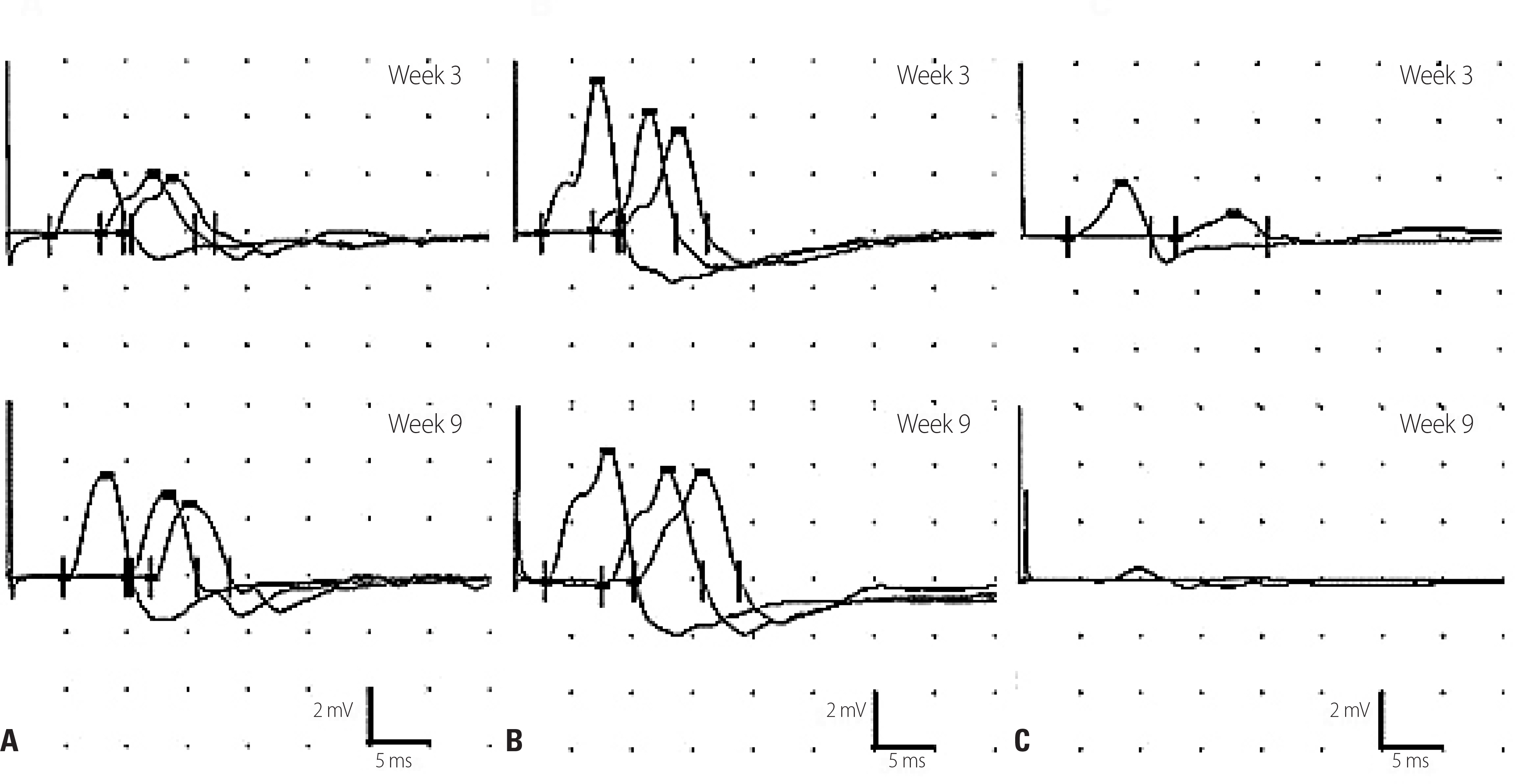Ann Clin Neurophysiol.
2017 Jul;19(2):148-150. 10.14253/acn.2017.19.2.148.
Guillain-Barré syndrome associated with hyper-IgE-emia
- Affiliations
-
- 1Department of Neurology, Korea University College of Medicine, Seoul, Korea. nukbj@korea.ac.kr
- KMID: 2387238
- DOI: http://doi.org/10.14253/acn.2017.19.2.148
Abstract
- Peripheral neuropathy associated with hyper-IgE-emia have been rarely reported. Here we present a 72-year-old man with acute motor axonal neuropathy who had relatively poor prognosis. The serum was weakly positive for IgG GQ1b and GT1a, and serum IgE was significantly elevated. He was transferred to a rehabilitation center with Medical Research Council grade 3 lower extremity weakness on admission day 65. We would suggest that hyper-IgE-emia may increase the magnitude and rate of neural damage in this case.
MeSH Terms
Figure
Reference
-
1.Johansson SG. The History of IgE: From discovery to 2010. Curr Allergy Asthma Rep. 2011. 11:173–177.
Article2.Amin K. The role of mast cells in allergic inflammation. Respir Med. 2012. 106:9–14.
Article3.Kimura A., Yoshino H., Yuasa T. Chronic inflammatory demyelinating polyneuropathy in a patient with hyperIgEaemia. J Neurol Sci. 2005. 231:89–93.
Article4.Coutinho BM., Nascimento OJ., Freitas MR. Distal acquaried de-mylinating symmetric neuropathy in two patients with essential hiperIgEmia. Arq Neuropsiquiatr. 2013. 71:493–494.
Article5.Pate MB., Smith JK., Chi DS., Krishnaswamy G. Regulation and dys-regulation of immunoglobulin E: a molecular and clinical perspec-tive. Clin Mol Allergy. 2010. 8:3.
Article6.Walker ME., Hatfield JK., Brown MA. New insights into the role of mast cells in autoimmunity: evidence for a common mechanism of action? Biochim Biophys Acta. 2012. 1822:57–65.
Article7.He L., Zhang G., Liu W., Gao T., Sheikh KA. Anti-Ganglioside anti-bodies induce nodal and axonal injury via Fcγ receptor-mediated inflammation. J Neurosci. 2015. 35:6770–6785.
Article8.Mathey EK., Derfuss T., Storch MK., Williams KR., Hales K., Woolley DR, et al. Neurofascin as a novel target for autoantibody-mediated axonal injury. J Exp Med. 2007. 204:2363–2372.
Article9.Dines KC., Powell HC. Mast cell interactions with the nervous system: relationship to mechanisms of disease. J Neuropathol Exp Neurol. 1997. 56:627–640.
- Full Text Links
- Actions
-
Cited
- CITED
-
- Close
- Share
- Similar articles
-
- Posttraumatic Guillain-Barré Syndrome Immediately Following a Traffic Accident
- Guillain-barré Syndrome after Multiple Bee Stings
- A Case of Hyper-IgE Syndrome Presenting as a Vesiculopustular Eruption in an Infant
- Current Concept of Guillain-Barré Syndrome
- Guillain-Barré syndrome supervening on meningitis in primary Epstein-Barr virus infection


